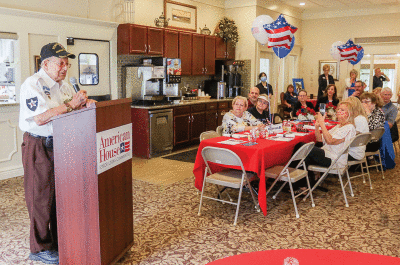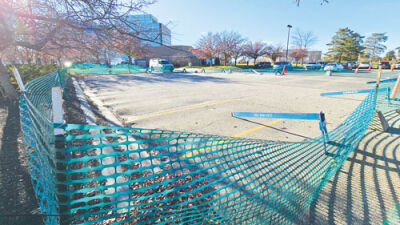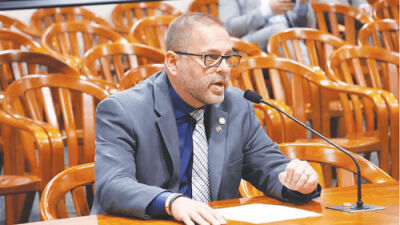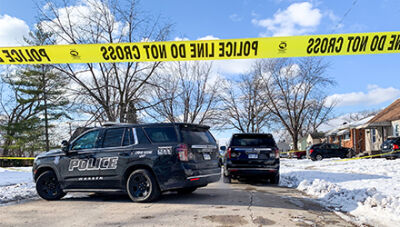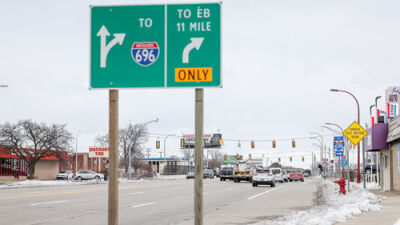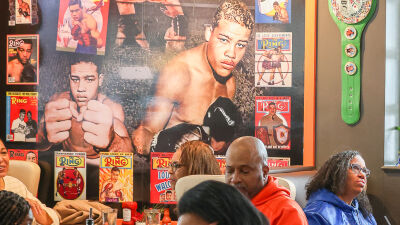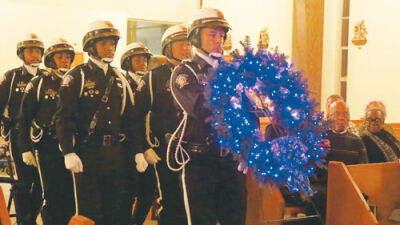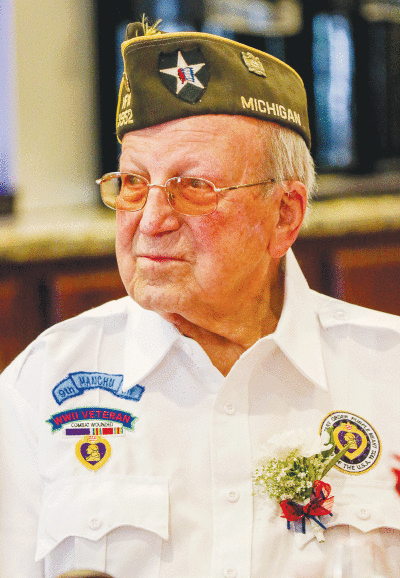
Raymond Tarabusi was honored during a D-Day luncheon at American House Elmwood June 6. Tarabusi is a World War II combat veteran who fought during the D-Day battle in Normandy. He is the recipient of two Purple Hearts for his service during the battle, as well as several other commendations.
Photo by Patricia O’Blenes
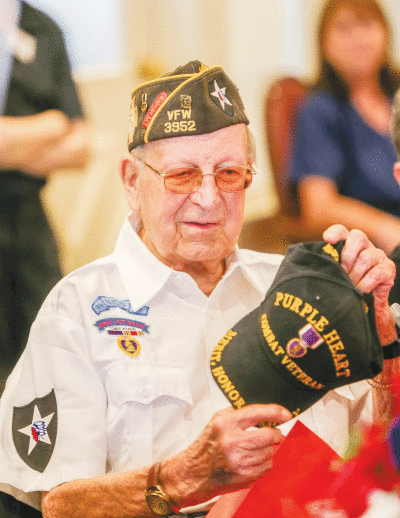
Raymond Tarabusi was given a new hat designating his combat veteran status. He is known to always have a hat.
Photo by Patricia O’Blenes
ROCHESTER HILLS — Raymond Tarabusi has a mind like a steel trap.
The army veteran, 97, remembers the events surrounding D-Day as if they were yesterday.
Drafted to join the army at the age of 18, Tarabusi completed basic training in Texas before being shipped to England in the spring of 1944 to help with the invasion of Normandy.
“After 20 weeks of training, I was (transformed) from an 18-year-old young man, who was never away from home, and suddenly I’m a full-fledged soldier,” he said.
He recalls being stationed in England while soldiers invaded the beaches of Normandy on D-Day June 6, 1944.
“When our guys landed, the infantry, they ran from the boats, and thousands were killed that day — as much as 9,000, maybe. Then they kept coming, and the Germans couldn’t kill them all; they just kept coming and coming. At the end of the day, they managed to secure the beach. They got to high ground, and they took control of the beach and took the snipers out,” Tarabusi said.
After five days of battle, his army platoon of 40 men was called to serve as replacement troops on the front line, so they piled into two trucks in groups of 20 to make the journey.
For Tarabusi, it was a shock to the system, to say the least.
“We drove inland about 25-30 miles to the front lines, which was where they were, and along the way, I noticed bodies in the ditches there, both Americans and German — they hadn’t had time to get them out yet. So, when I saw all that, I said, ‘Oh boy. I’m in trouble,’” he said. “That was my first impression that bad things were going to happen along the way.”
Minutes after their arrival, while being introduced to the others in the company, one soldier’s rifle accidentally discharged while he was cleaning his gun, killing the man on the spot.
Tarabusi, the youngest in the group, inherited the man’s weapon.
“These guys I joined were like 22-23 — four to five years older than I was — and they were all experienced. I’m just a young kid coming in as a replacement, and they were saying, ‘This kid isn’t going to last long.’ Well, I lasted longer than most of them, because two-thirds were killed or wounded, and I was still there,” he said.
On July 14, while still in combat, Tarabusi turned 19.
“The next day is very important because something happened that is still in my mind to this day,” he said.
Tarabusi was with a 23-year-old man — aptly nicknamed Moose, due to his large stature — on the front lines on outpost duty when the enemy opened fire.
“I’m about five minutes away from taking over his position, and just then, a shot rang out. A sniper had been waiting until he was in the right spot, and he shot Moose in the head, and with one shot, he died in seconds. I was in shock because this guy was my mentor. He was supposed to protect me, and he was lying there on the ground dead,” he said.
A few days later, Tarabusi himself was wounded in battle, on July 31.
“I was in the middle of the field when I heard the familiar sound of an artillery shell coming in my direction … so I laid on the ground as flat as I could. This artillery shell landed less than a foot beside me, by my right-hand side. And when it exploded, I was covered with dirt and smoke. It was so close. Had it been another foot over, I’d be gone,” he said. “I knew I was hit, and I could feel pain in my thigh. I was able to move my legs, so I got up and I ran across the field to get some protection. I was there for maybe two or three more minutes when three more shells came into the same spot where I was at. Had I stayed where I was, I would have been history.”
After calling for a medic, he returned to camp and received a Purple Heart right on the spot. He had his wound dressed and was returned to battle.
Tarabusi was later shot in the foot by a sniper on Aug. 3, while serving as a perimeter guard.
“A German was maybe 200 yards away — he could see me, but I couldn’t see him — and two shots went over my head. I heard pop, pop … and the third shot hit me in the foot,” he said. “When that hit me there, the pain was enormous. It was like I was stung by 1,000 bees, but I was able to crawl back over the hedgerow.”
He was flown back to England, where he recuperated for four months before returning to the front lines.
Tarabusi was allowed to return home in December of 1945 and has since gotten married, had children and watched them grow.
Today, at the age of 97, he remains one of the last men standing in his division.
“The fact that I survived was a miracle. I don’t know why,” he said. “But that’s my story.”
Tarabusi was recently a guest of honor at a D-Day luncheon held June 6 at his residence, American House Elmwood in Rochester Hills.
“When American House founder Robert Gillette heard of Raymond’s story, he wanted to personally share with him that it is an honor and privilege to have him with us,” said Kathryn Smith of American House Elmwood.
 Publication select ▼
Publication select ▼